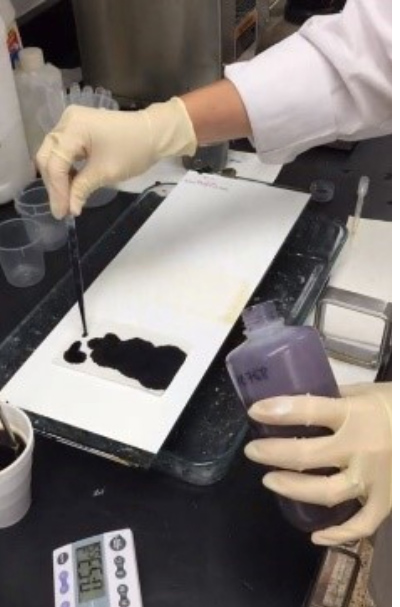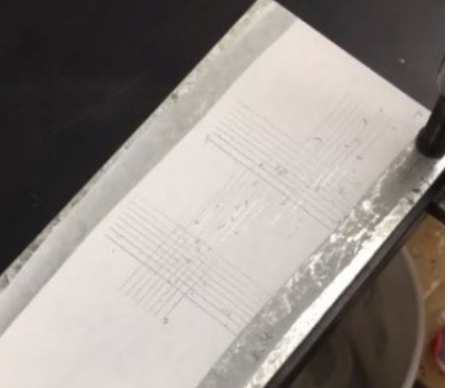MPI Update
News from MPI HQ
We have been very busy at MPI! You may have seen some of the new updates, however I just wanted to give a brief overview here:
MPI Decision Tree™ Tools
With the NEW Architectural Painting and Restoration Repainting Decision Tree tools, you will be able to streamline your coatings specification and product selection process— saving you time, reducing risk, and helping you deliver outstanding results. You can get more information and try out the new tools
HERE
MPI Website
On the new site www.mpi.net - there are now individual Product/Services pages, where a user can find information such as: becoming a Listing Manufacturer, or how to find an MPI Certified Inspector. Plus much more.
MPI Store and User Portal
The new store has improved navigation, with both product header links and a sidebar with drop down information. The new User Portal opens up on the “Dashboard” where you will find quick links to your current subscriptions and Ecourses.
MPI Blog “Coatings Corner”
We are finalizing our new blog “Coatings Corner” and invite YOU to submit your blog content now! We have set up this industry information space to be a resource for the industry, written by the industry. We would be looking for roughly 800-word posts covering industry topics that would inform/inspire the coatings industry. Submit content HERE
Feedback Required
All of these updates have been made with the user experience in mind and based on your previous feedback. We would love to hear your thoughts on these new updates so that we can continue to update and improve - Please share your thoughts HERE
Thank you! Lucy Schneider, Director of Operations MPI
Why Standards?
A system of standards and testing provide an important {and probably the best} method of predicting the suitability and performance of a coating system for the specifiers and purchasers of coatings. Other systems of evaluation may rely on possibly biased information or anecdotal observations.
 The historic methods used by a specifier to select a coating system for a project, was to rely on their own past-experience, or to base their selection on the suggestions of a manufacturer's representative. Both these methods may be successful in some instances.
The historic methods used by a specifier to select a coating system for a project, was to rely on their own past-experience, or to base their selection on the suggestions of a manufacturer's representative. Both these methods may be successful in some instances.
However, choosing products which have passed careful, systematic testing to a well-designed performance-based standard, by an independent entity, provides the most reliable method of ensuring sustainable performance.
MPI Technical Director - Bob Welch, has a good example of explaining standards when speaking to groups about MPI testing - When a salesclerk at a large paint retailer was asked what the most important qualities of paint were, the paint rep said it was because it was the thickest and it was because they used REFLEXOLOGY in the product. The sales rep was seen an "expert" to many customers.
 It pointed out to me that quality is in the eye of the beholder. Properties that may have little effect on the ultimate performance of the product can affect the perception of "quality".
It pointed out to me that quality is in the eye of the beholder. Properties that may have little effect on the ultimate performance of the product can affect the perception of "quality".
That is why a well-designed standard and a robust evaluation system is so important to ensuring the selection process concentrates on the properties which ensure the suitability of the product or system for the intended use.
MPI have developed a range of Technical Standards for coatings products, that are in place to make sure that the products listed in the MPI Approved Products List, when used in conjunction with MPI Systems, have the desired outcome.
MPI Technical Specialist – Terrance Mayes, concludes that standards give us a way to concretely assess a product’s performance outside of just using it and seeing how well it works. This is especially important with extended tests like Accelerated Weathering, Corrosion Resistance, and Biological Growth, where we’re functionally peering into the future to see how the coating is going to perform months and even years down the line.
Further, the classifications used in standards help us come to a mutual understanding of terms. Gloss, for example, is commonly defined descriptively, using terms like “high-shine” or describing common application locations. Using MPI standards, we define it prescriptively: Gloss-level coatings have a 60° angle of incidence gloss value of 70+. That may not be as useful at first glance as saying it’s shiny, or good on kitchen walls, but it helps keep a consistent definition in place so that regardless of which Gloss-level coating is selected from the APL, the product will behave as expected.
MPI Training Pass results

Congratulations to the Latest MPI Certified Students
Essentials of Paint and Painting Technology
- Daniel Perkins, Axalta
- John Lanzone, Benjamin Moore
- Dmitrii Melnikov, Remdal Painting & Restoration
- Robert Fiore, Benjamin Moore
- Shannon Szumierz, Benjamin Moore
- Sylinia Graf, Benjamin Moore
- Jason Bartels, Benjamin Moore
- Ericka Cruz, Behr
- Brigida Parker, Benjamin Moore
- on Kiddie Ygar, Davies Paints
- Cesare (Chet) Parisi, Benjamin Moore
- Jeffrey Murray, Benjamin Moore
- Connor McNiff, Benjamin Moore
- Elwood Hernandez, Benjamin Moore
- John Davis, Benjamin Moore
- Amanda Jull, Benjamin Moore
Professional Tip
Generally, untinted whites and related tint bases in the same line are used for consideration for inclusion in the MPI Approved Products List. It should be noted, however, that accent bases might not provide the same durability as the whites. It is also noted that tinting can affect certain performance properties, sometimes significantly.

